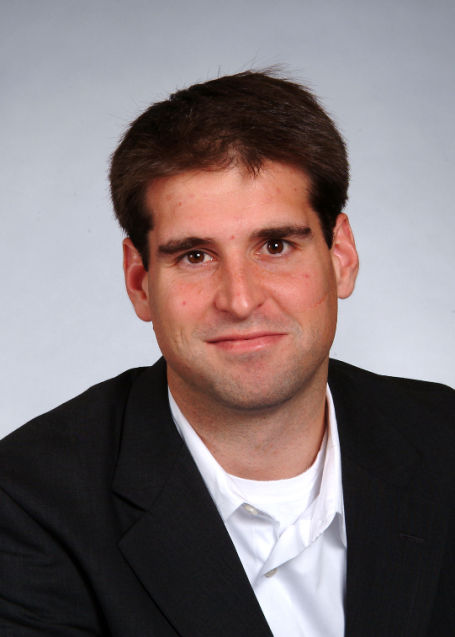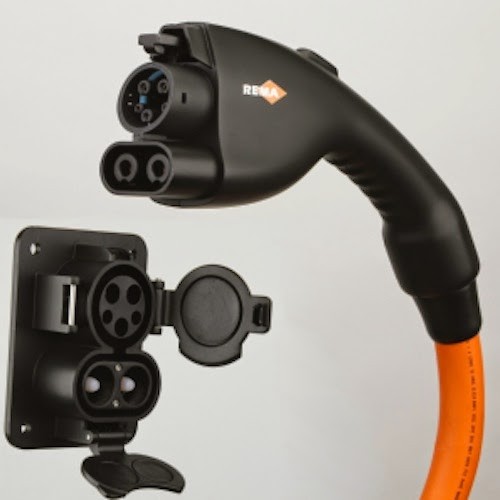What does Tesla Motors’ CTO JB Straubl think about the future of batteries and charging protocols? The SAE published a recent interview with him which in part is interesting because Tesla uses a non-SAE-standard protocol for electric vehicle charging.
Battery format: Tesla is still using 18650 size cells in their battery pack. Many people dismiss this choice as Tesla using “laptop cells” that aren’t automotive quality. However, Straubl points out that 18650 is a cell size, and that Tesla is always looking at options but keep seeing the 18650 as the most compelling format. The chemistry they’ve jointly developed with Panasonic is nickel-cobalt-aluminum (LiNiCoAlO2) lithium-ion chemistry for our battery cathode material, and they do not use a titanate.
He described it as an “automotive cell” that has been “tested to automotive standards.”
Why do they stay with the 18650 cell format? “What keeps us in that general shape and size is the production and cost
efficiency. We’re seeing price points that none of the larger-format
cells are able to meet.”
Fast charging standard: Last fall the SAE J1772 committee approved the SAE DC Fast Charging standard, a.k.a. Combined Charging System. However, Tesla chose to implement a proprietary connector and system for the Supercharger fast charger on the Tesla Model S. The SAE asks “why”?
First, Straubl says that fast charging is transformational for electric cars and electric car ownership. “It totally untethers an EV. You can go on trips like a normal car.”
However, he says the existing standard is not useful. “There still is no really good standard on this. The SAE committees finalized the new Combo Connector standard, which I’m a little frustrated with because the new combo-standard plug doesn’t have the current-carrying capability of our existing DC plug, in terms of current on the DC pins. I feel that a standard needs to project out at least five, ten years.”
Last year, Elon Musk said both the CHAdeMO and SAE DC Fast Charging systems used plugs that are ungainly and ugly![]() .
.
They’re committed to providing adapters for non-Tesla charging standards. What they did not want to do is deal with two plugs – hence CHAdeMO would be right out.
Straubl has little confidence that there will be a convergence in charging standards and connectors. He describes Europe as “totally off in another direction from North America” because their charging standards are incompatible with North America’s.
He suggests the solution would be to “dictate a more universal grid-side receptacle and allow flexibility on the car side.”
Wireless charging: He has more confidence about this but doesn’t see much chance for truly high powered wireless charging systems. We’ll note in passing that apparently Tesla is participating with Evatran and the ORNL on a wireless charging project![]() .
.
Source: SAE![]()
- Highway design could decrease death and injury risk, if “we” chose smarter designs - March 28, 2015
- GM really did trademark “range anxiety”, only later to abandon that mark - March 25, 2015
- US Government releases new regulations on hydraulic fracturing, that some call “toothless” - March 20, 2015
- Tesla Motors magic pill to solve range anxiety doesn’t quite instill range confidence - March 19, 2015
- Update on Galena IL oil train – 21 cars involved, which were the supposedly safer CP1232 design - March 7, 2015
- Another oil bomb train – why are they shipping crude oil by train? – Symptoms of fossil fuel addiction - March 6, 2015
- Chevron relinquishes fracking in Romania, as part of broader pull-out from Eastern European fracking operations - February 22, 2015
- Answer anti- electric car articles with truth and pride – truth outshines all distortions - February 19, 2015
- Apple taking big risk on developing a car? Please, Apple, don’t go there! - February 16, 2015
- Toyota, Nissan, Honda working on Japanese fuel cell infrastructure for Japanese government - February 12, 2015











